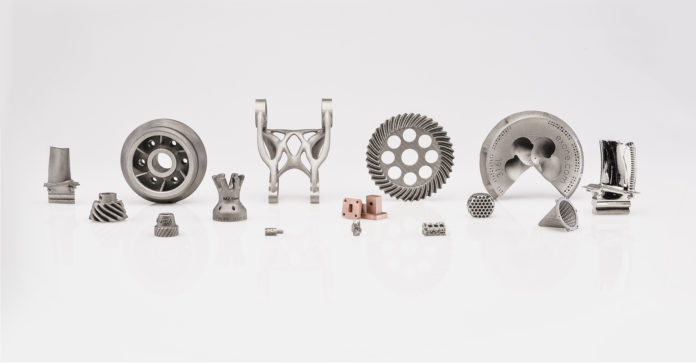The more AM materials a 3D printer can process, the better it is for the user. ExOne drastically stands out from the crowd. 21 materials have been qualified for the company’s binder jetting technology. They include 10 single-alloy metals, six ceramics, and five composite materials. – Not to mention that over 24 additional powders including aluminum and Inconel 718 have also been qualified for 3D printing in controlled research and development environments.
Binder jetting technology is one of the most competitive technologies in metal Additive Manufacturing. Among its well-known advantages, the technology is more economic than others as 100% of unused powder can be reused in future prints, not to mention that it requires less post-processing time and less materials than other technologies.
With these advantages, manufacturers have to ramp up to stand out from the crowd. In that sense, being the first does not always mean you are the right partner.
ExOne was not one to stand on the sidelines and throw rocks. The company might be one of the first ones to deliver a viable manufacturing process to this industry, but over the years, it has strived to deliver a competitive technology by transforming powdered materials into dense and functional parts at high speeds.
This “aggressive progress” as per the words of CEO John Hartner relies in the qualification of new materials: “Qualifying a new material for binder jet 3D printing is complex work that involves optimizing how materials, machines and processes work together”, said ExOne spokesperson.
The manufacturer has been supported in this qualification program by partners including Global Tungsten & Powders, H.C. Starck Solutions, NASA, Oak Ridge National Laboratory, SGL Carbon, the U.S. Army, the U.S. Department of Energy, the University of Texas at El Paso, and Virginia Tech.
In all, ExOne customers are now 3D printing more than a dozen different materials for R&D, prototypes, and production, including proprietary materials.
Three material qualification levels constitute ExOne’s New Qualification System
Starting today, three material qualification levels will enable the operator to recognize different degrees of material readiness: Third-Party Qualified Materials, Customer-Qualified Materials and R&D Qualified Materials.
Third-Party qualified materials have passed ExOne tests over multiple builds. Plus, an independent third party has verified material property data. They include:
- Metals: 17-4PH, 304L, 316L, M2 tool steel
- Metal Composites: 316 with bronze, 420 with bronze, and tungsten with bronze
14 materials have been qualified by the customers with their own standards:
- Metals: cobalt chrome, copper, H13 tool steel, Inconel 625, titanium, tungsten heavy alloy
- Ceramics: alumina, carbon, natural sand, synthetic sand, silicon carbide, and tungsten carbide-cobalt
- Ceramic-metal composites: boron-carbide aluminum and silicon carbide with silicon
Last but not least, 26 materials from R&D have passed a preliminary qualification phase by ExOne and are deemed printable, supported by ongoing development. There are:
- Metals: 4140, 420, 4340, 4605, aluminum, bronze, H11 tool steel, Hastelloy, Haynes 230, Inconel 718, iron-chrome-aluminum, Panacea, tungsten, TZM Molybdenum
- Ceramics: aluminum nitride, barium titanate, boron carbide, glass, lead zirconate titanate (PZT), silicon nitride, tungsten carbide, zirconia, zirconium carbide
- Metal composites: iron with bronze, tungsten with copper, and tungsten with Invar
Image via ExOne – Remember, you can post free of charge job opportunities in the AM Industry on 3D ADEPT Media or look for a job via our job board. Make sure to follow us on our social networks and subscribe to our weekly newsletter : Facebook, Twitter, LinkedIn & Instagram ! If you want to be featured in the next issue of our digital magazine or if you hear a story that needs to be heard, make sure to send it to contact@3dadept.com






